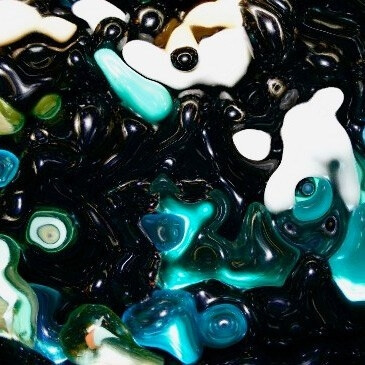News
Glassblowers can pull superheated glass fresh from a furnace just like taffy, blow bubbles in it, and fashion beautiful objects by manipulating it while it flows. But there is something curious about glass. Molten glass, as it cools and vitrifies, never actually becomes a solid in the classic sense: glass molecules never lock themselves into a crystalline structure the way a true solid would. Instead, they just stop flowing, like honey in the freezer. (In fact, when honey is very cold, it behaves like glass.)
When scientists want to understand the properties of glass—what makes it flow at one temperature and jam up at another, for example—they use as a model a colloidal fluid: a liquid filled with tiny particles, or colloids, suspended evenly in it (milk is a familiar example). By packing in more and more colloidal particles, they make the suspension denser and slower to mimic glass cooling.
“The behavior of single molecules in glass can’t be observed,” says Mallinckrodt professor of physics David Weitz, an expert in experimental soft condensed matter. “But the colloidal particles, which are a thousand times larger, can be seen under a microscope,” allowing researchers to visualize the behavior of glass at the molecular level under different conditions of temperature or stress.
Cutting-edge science delivered direct to your inbox.
Join the Harvard SEAS mailing list.
